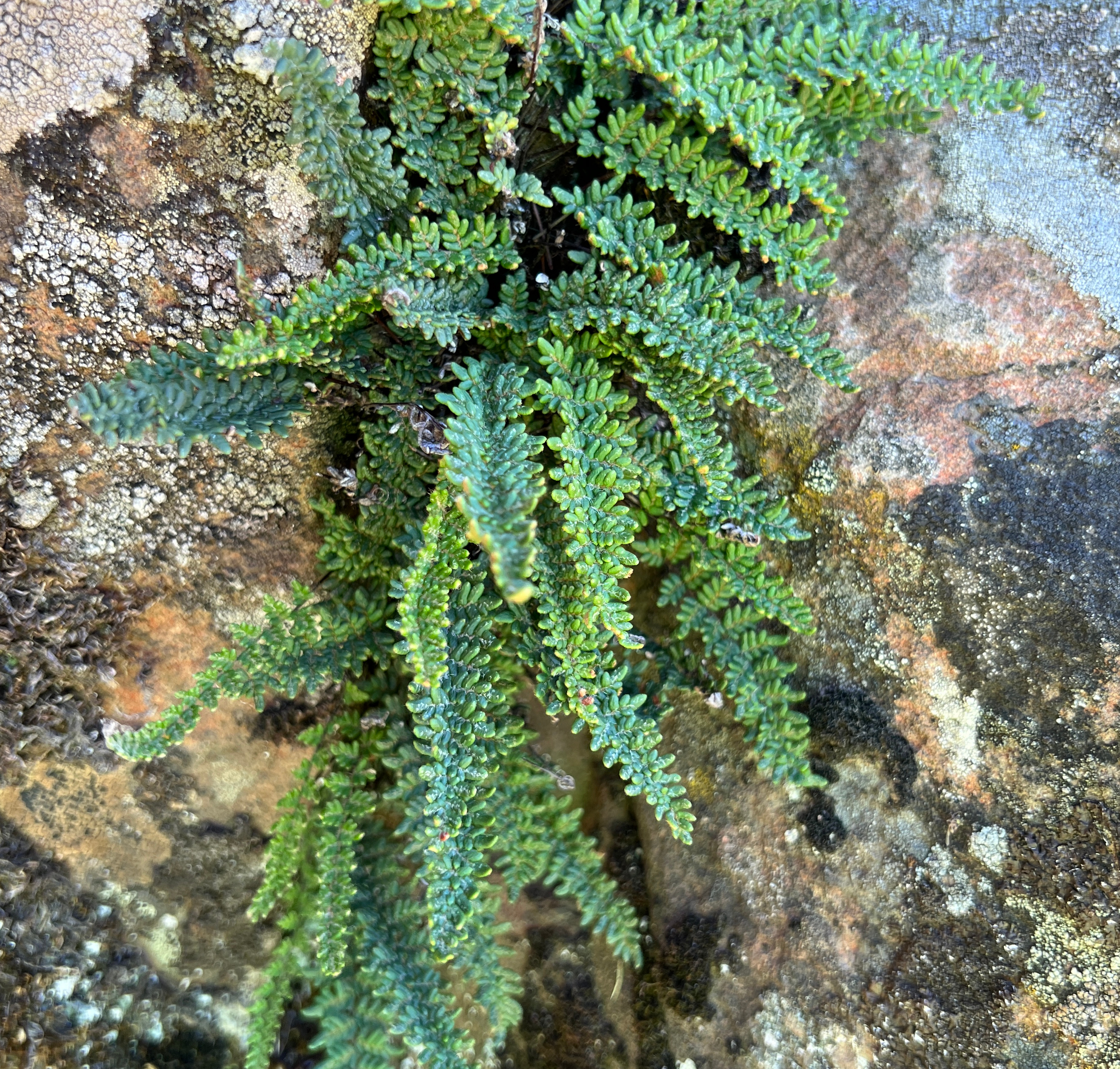|
Myriopteris Wrightii
''Myriopteris wrightii'', formerly known as ''Cheilanthes wrightii'', is a species In biology, a species is the basic unit of classification and a taxonomic rank of an organism, as well as a unit of biodiversity. A species is often defined as the largest group of organisms in which any two individuals of the appropriate s ... of cheilanthoid fern with the common name Wright's lipfern. It is native to the southwestern United States and northern Mexico. Description ''Myriopteris wrightii'' grows from a long creeping rhizome that is 1 to 3 mm in diameter with brown scales often deciduous on older portions of stem. The leaves are clustered to somewhat scattered and 4 to 25 cm long and 1 to 4 cm wide. As the fronds first emerge, their vernation is circinate (tightly coiled). The leaf petiole is brown and grooved adaxially (upper side). The leaf color is medium green, sometimes with a silvery or bluish cast. The leaf blade is lanceolate to ovate-deltate in sha ... [...More Info...] [...Related Items...] OR: [Wikipedia] [Google] [Baidu] |
Species
In biology, a species is the basic unit of Taxonomy (biology), classification and a taxonomic rank of an organism, as well as a unit of biodiversity. A species is often defined as the largest group of organisms in which any two individuals of the appropriate sexes or mating types can reproduction, produce Fertility, fertile offspring, typically by sexual reproduction. Other ways of defining species include their karyotype, DNA sequence, morphology (biology), morphology, behaviour or ecological niche. In addition, paleontologists use the concept of the chronospecies since fossil reproduction cannot be examined. The most recent rigorous estimate for the total number of species of eukaryotes is between 8 and 8.7 million. However, only about 14% of these had been described by 2011. All species (except viruses) are given a binomial nomenclature, two-part name, a "binomial". The first part of a binomial is the genus to which the species belongs. The second part is called the specifi ... [...More Info...] [...Related Items...] OR: [Wikipedia] [Google] [Baidu] |
Cheilanthoid
Cheilanthoideae is one of the five subfamilies of the fern family Pteridaceae. The subfamily is thought to be monophyletic, but some of the genera into which it has been divided are not, and the taxonomic status of many of its genera and species remains uncertain, with radically different approaches in use . Phylogenic relationships The following phylogram shows a likely relationship between Cheilanthoideae and the other Pteridaceae subfamilies. Although subfamily Cheilanthoideae itself is thought to be monophyletic, many of the genera into which it has been divided (including ''Cheilanthes'', ''Doryopteris'', ''Notholaena'', and ''Pellaea'') have been shown to be polyphyletic. Genera The division of the subfamily Cheilanthoideae into genera and species remains uncertain . Christenhusz et al. (2011), the Pteridophyte Phylogeny Group classification of 2016 (PPG I), and the November 2019 version of the ''Checklist of Ferns and Lycophytes of the World'' (''World Ferns'' 8.1 ... [...More Info...] [...Related Items...] OR: [Wikipedia] [Google] [Baidu] |
Vernation
Vernation (from ''vernal'' meaning ''spring'', since that is when leaves spring forth in temperate regions) is the formation of new leaves or fronds. In plant anatomy, it is the arrangement of leaves in a bud. In pine species, new leaves are short and encased in sheaths. Each leaf bundle consists of 2 to 5 needles. All the leaves on one section of branch grow in length together. In cabbage species, new leaves are folded over, each covered by the previous leaf. Circinate vernation Circinate vernation is the manner in which most fern fronds emerge. As the fern frond is formed, it is tightly curled so that the tender growing tip of the frond (and each subdivision of the frond) is protected within a coil. At this stage it is called a ''crozier'' (after the shepherd's crook) or '' fiddlehead'' (after the scrollwork at the top of a violin). As the lower parts of the frond expand and toughen up, they begin to photosynthesize, supporting the further growth and expansion of the fron ... [...More Info...] [...Related Items...] OR: [Wikipedia] [Google] [Baidu] |
Myriopteris
''Myriopteris'', commonly known as the lip ferns, is a genus of cheilanthoid ferns. Like other cheilanthoids, they are ferns of dry habitats, reproducing both sexually and apogamously. Many species have leaves divided into a large number of small, bead-like segments, the probable inspiration for the generic name. Hairs and/or scales are often present on both the upper and lower surfaces of the leaf, and their presence and appearance are useful in distinguishing between species. The genus is most diverse in Mexico, but species are found from southwestern Canada south to southern Chile, and one species is endemic to southern Africa. Description No single morphological character divides ''Myriopteris'', as presently circumscribed, from the other cheilanthoids. Convergent evolution in arid environments is thought to be responsible for widespread homoplasy in the morphological characters traditionally used to classify this group. While small, bead-like ultimate segments are associate ... [...More Info...] [...Related Items...] OR: [Wikipedia] [Google] [Baidu] |
Ferns Of Mexico
A fern (Polypodiopsida or Polypodiophyta ) is a member of a group of vascular plants (plants with xylem and phloem) that reproduce via spores and have neither seeds nor flowers. The polypodiophytes include all living pteridophytes except the lycopods, and differ from mosses and other bryophytes by being vascular, i.e., having specialized tissues that conduct water and nutrients and in having life cycles in which the branched sporophyte is the dominant phase. Ferns have complex leaves called megaphylls, that are more complex than the microphylls of clubmosses. Most ferns are leptosporangiate ferns. They produce coiled fiddleheads that uncoil and expand into fronds. The group includes about 10,560 known extant species. Ferns are defined here in the broad sense, being all of the Polypodiopsida, comprising both the leptosporangiate (Polypodiidae) and eusporangiate ferns, the latter group including horsetails, whisk ferns, marattioid ferns, and ophioglossoid ferns. Ferns fi ... [...More Info...] [...Related Items...] OR: [Wikipedia] [Google] [Baidu] |


